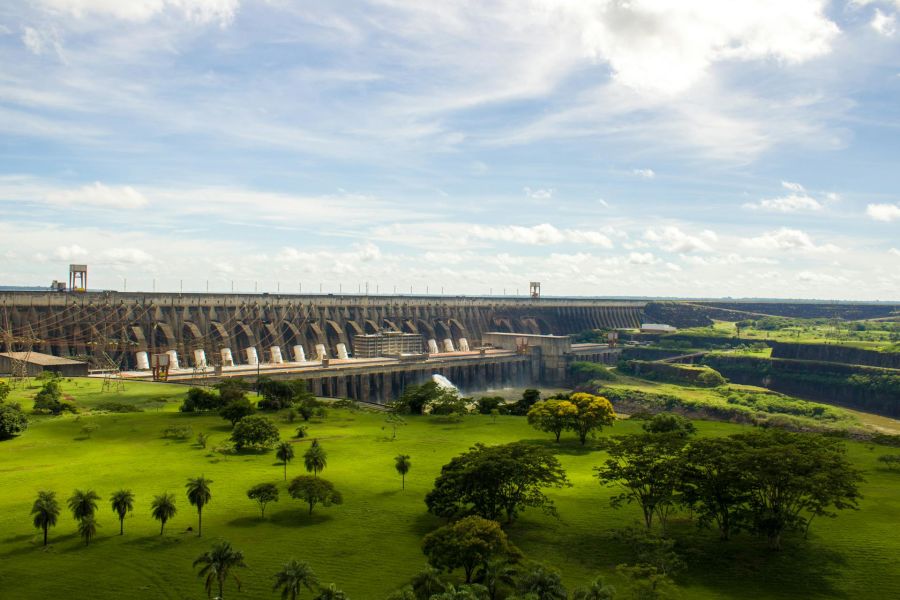How do you future-proof your data-acquisition project?
by Michael Adams | Updated: 09/03/2024 | Comments: 1

As we approach the three-decade mark for some of our long-term data-acquisition projects, the question arises: “What does it take to ensure these systems continue to thrive far into the future?” How do you protect your investment and reap the most financial return?
The Importance of Future-Proofing
The success, reliability, and longevity of these projects stand as a testament to their design and implementation. It’s crucial to prioritize future-proofing when selecting the right equipment for any long-term project. This includes choosing the right data-acquisition devices, sensors, power supplies, and communications tools. With so many excellent products available, careful consideration is key to ensuring the longevity and success of your system.
The Overlooked Aspect: Maintenance
With all the focus on the front end of a project, one critical aspect is often overlooked: maintenance. Who will maintain the system? Are they equipped to handle it? Can a single person or team support 1,200 data-acquisition systems, or will it require multiple people or organizations? Is there financing available for ongoing maintenance?
Common Pitfalls in Long-Term Projects
Throughout my career, I’ve witnessed numerous long-term projects falter due to a few key issues. These include a lack of funding for essential communications and resources for field audits and visual inspections, as well as the replacement of hardware damaged by animals, vandalism, and natural events. Additionally, insufficient funding to hire and maintain a dedicated maintenance team has often contributed to these challenges.
What does maintenance entail?
What tasks would the maintenance team need to handle? The team members would be responsible for inspecting all components exposed to the elements, including enclosures, batteries, solar panels, antennas, and cables. This involves checking for signs of UV-related deterioration, ensuring cable jackets are intact, and looking for any damage caused by animals.
Battery Monitoring and Replacement
Additionally, the maintenance team would monitor the internal lithium batteries in our automated monitoring platforms. These batteries maintain the real-time clock and safeguard static RAM (SRAM) data. Our design ensures that as long as the automated monitoring platform is externally powered, the internal battery circuit is off to prevent unnecessary drain. However, prolonged periods without external power—such as a dead battery or storage on a shelf—can shorten the battery's lifespan from about ten years under power to approximately three years without. Our manuals provide battery specifications and instructions for sourcing and replacing them locally, and our repair department also offers battery replacement services.
Enclosure and Sensor Maintenance
When inspecting an enclosure’s interior, are there signs of high humidity that might indicate the need for a regular desiccant replacement schedule? It's also important to ensure that enclosures are properly sealed to prevent insects, rodents, or snakes from nesting inside. Additionally, consider whether the devices within the enclosures require maintenance, such as lithium battery replacement.
The sensors themselves also need attention. Do they require routine recalibration? Are they accessible for cleaning in case of fouling, or are they permanently installed, such as being grouted in place? If any sensors are damaged, they may need to be replaced.
Planning for Long-Term Success
Beyond field visits, it’s crucial to plan for long-term communications options. This includes maintaining cellular data plans and ensuring funds are available for future subscriptions.
It’s also vital to consider the software used to access the equipment or provide visualization. Do these software packages require annual service agreements? If so, are there funds allocated from the start of the monitoring project to cover these costs?
Achieving Long-Term System Success
Ensuring long-term functionality for automated monitoring systems involves careful attention to every component, especially since the systems are exposed to the elements year-round. With a comprehensive maintenance approach, long-term success is achievable, and the benefits of automated, unattended monitoring can be fully realized by all stakeholders.
Real-World Examples of Long-Term Success
The Prince Edward Island structural health monitoring project has been operational since about 1997, and the Itaipu Dam (pictured above) on the border between Brazil and Paraguay has been continuously monitored for nearly the same time. These long-term projects highlight the value of thorough planning and maintenance.
Working Together for the Future
Do you have questions about maintaining your projects? Our application engineers and sales team are here to help. Reach out to discuss your current projects, and we'll work together to find the best solutions for you.
















 Michael Adams is a Sales Engineer for the infrastructure and geotechnical markets at Campbell Scientific, Inc. He has a degree in Electronic Systems, which he has applied for more than 30 years in system design, field deployment, and system longevity/reliability—with a strong focus on instrumentation and field troubleshooting. When he's not working, Michael can be found cycling, skiing, or flyfishing.
Michael Adams is a Sales Engineer for the infrastructure and geotechnical markets at Campbell Scientific, Inc. He has a degree in Electronic Systems, which he has applied for more than 30 years in system design, field deployment, and system longevity/reliability—with a strong focus on instrumentation and field troubleshooting. When he's not working, Michael can be found cycling, skiing, or flyfishing.
Comments
Saadi Al-Musawi | 09/05/2024 at 07:27 AM
Thank you Michael for this interesting article and focusing about the importance of system maintenance to keep it in healthy situation and correct data get from it.
Saadi
Please log in or register to comment.